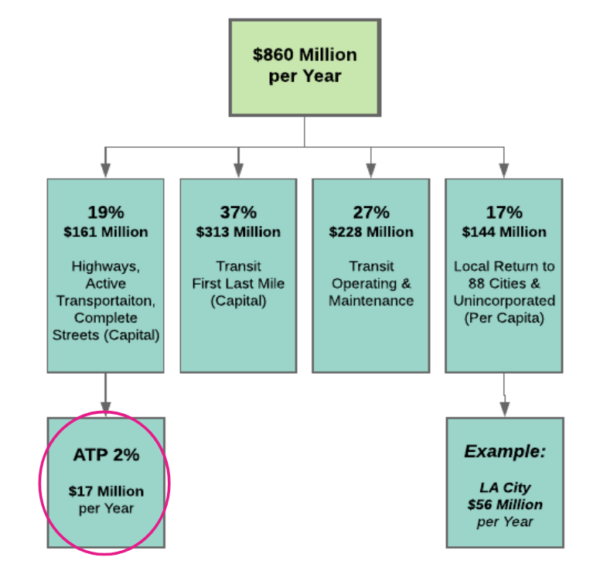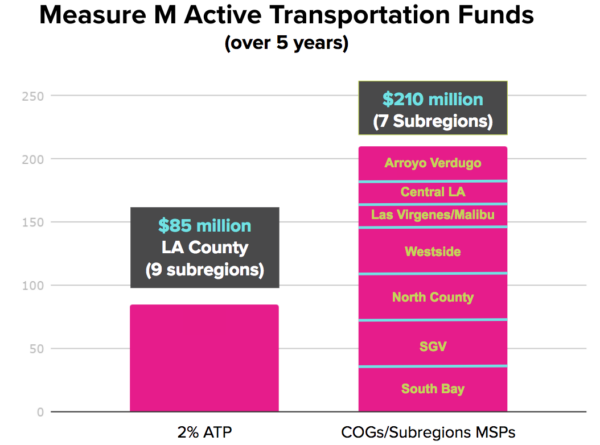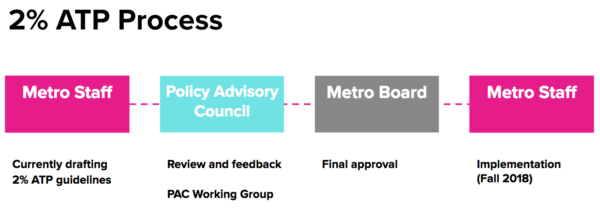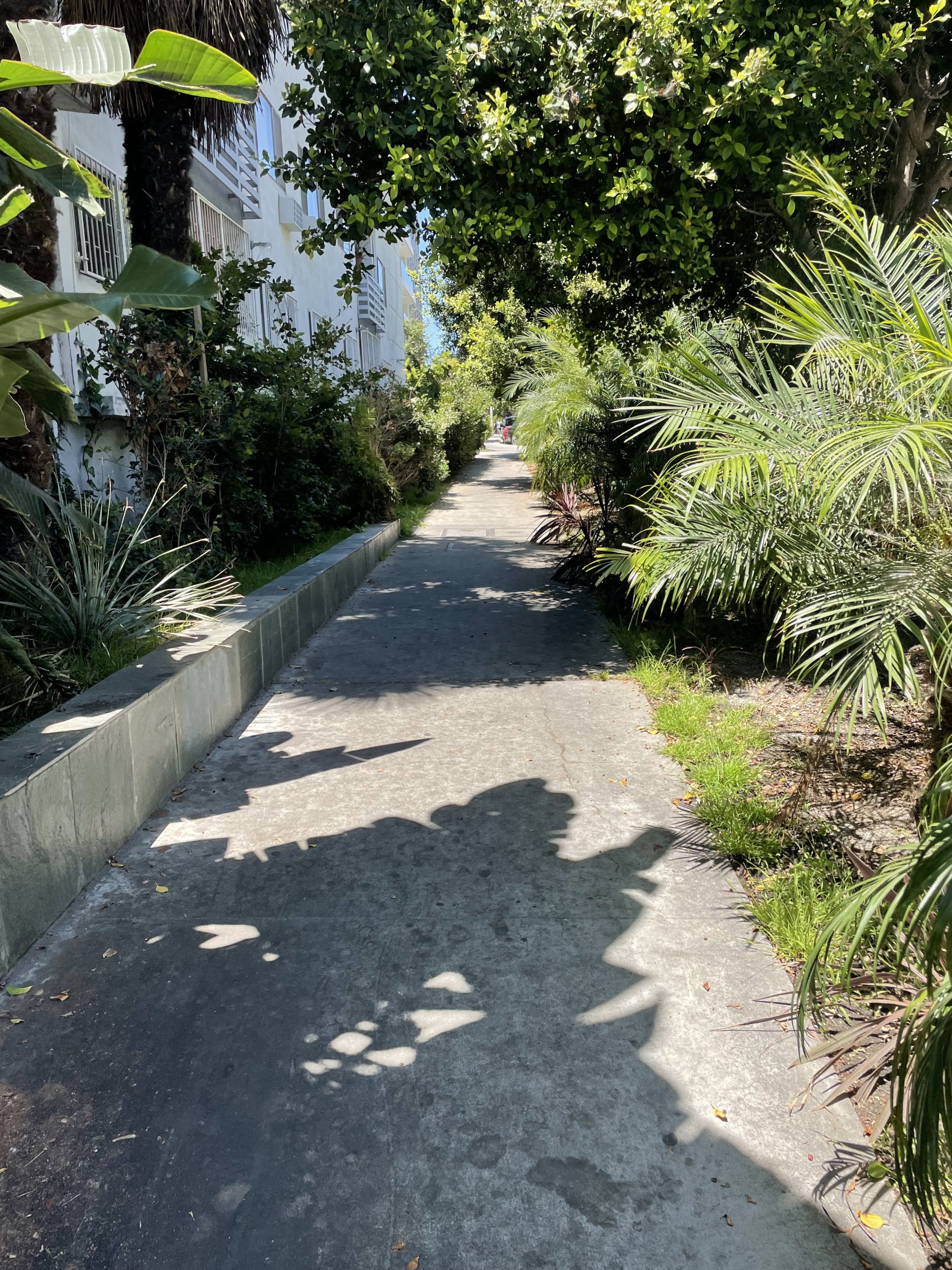You know what music is to the ears of active transportation advocates? Active transportation funding. Without dedicated funding, how can we build healthy communities where all people have safe and convenient transportation choices?
When Measure M was passed by voters in 2016, ensuring a $122 billion funding source for transportation investments across Greater Los Angeles, it marked the first countywide transportation sales-tax that specifically dedicated funding for active transportation!
But in a $122 billion expenditure plan that includes transit and highway construction, goods movement, transit operations, state of good repair (maintenance), and local return, where do we find the funds set aside for walking and rolling?
Show me the money
One of the Measure M programs that specifically funds active transportation is the 2% Active Transportation program (or 2% ATP). (Not to be confused with the State’s ATP fund!)

Image courtesy of: Los Angeles County Bicycle Coalition
2% ATP is estimated to generate approximately $17 million per year from Measure M. Program details are currently being developed by Metro, but objectives and eligible uses have been established.
Objectives:
- Expand multi-modal connectivity
- Improve the regional active transportation network
Eligible uses:
- Active transportation and other capital that achieve 2% ATP objectives
- First/last mile components of major capital projects listed in the 2016 Measure M Expenditure Plan
- Note: The only eligible 2% ATP project currently listed in the adopted Measure M Guidelines is the LA River Waterway and Bike Path
Two existing policies that will guide the development of 2% ATP are the Metro Active Transportation Strategic Plan (ATSP) and Vision Zero. These are critical frameworks that will shape the program’s planning and emphasis on safety.
- Planning: Countywide funding needs for active transportation are huge. When Metro adopted the ATSP in 2016, staff estimated the cost of funding Countywide annual active transportation needs at low end of $737M and high end of $1.7B.
- Safety: The adopted Measure M Guidelines direct projects funded through Measure M to “support the protection of pedestrian and bicycle safety in parallel with Vision Zero or equivalent policies.” While the greater region currently lacks a countywide Vision Zero policy, it is crucial that traffic safety is a priority for active transportation investments.
The 2% ATP program will also coordinate with a number of related Metro plans and policies, covering Complete Streets, First/Last Mile, Sustainability, and Bike Share (22.1).
It is important to note that 2% ATP is not intended to be a standalone funding source for countywide active transportation needs and programs. Metro envisions this pot of Measure M funds as matching grant program for external funding opportunities (such as statewide ATP), and a competitive fund for regional active transportation projects.
Wait, can you show me more money?
Let’s recap:
- 2% ATP is estimated to generate approximately $17 million annually for the entire region
- Metro’s own ATSP estimate of regional active transportation needs total $737 million annually (on the low end) and up to $1.7 billion
- 2% ATP is not intended to be a standalone funding source for active transportation projects
While 2% ATP is a step forward in identifying the health and safety needs for Greater Los Angeles that can be addressed through active transportation improvements, it clearly is not enough money to meet the identified countywide need. Fortunately, it is not the only source of active transportation funding in Measure M.

We have written about the $10 billion Multi-year Subregional Programs (MSP) in Measure M. Part of why we care so much is that is comprises the largest amount of dedicated funding for first/last mile, sidewalks, bicycle infrastructure, and safe routes to school in Measure M. For further explanation of the difference between 2% ATP and MSP, check out our March 6 #JustGrowth webinar (slides).
Since 2% ATP is eligible for matching funds, it will be critical to strategically leverage these limited dollars with other funding opportunities to most efficiently improve the health and safety of our entire region.
What’s next?
Metro staff is currently finalizing draft guidelines for 2% ATP. On April 5, Metro will be hosting a 2% ATP working group open to members of the Metro Policy Advisory Council (PAC) to further refine these guidelines. See the 2% ATP guidelines process below.

On April 4, Investing in Place will be hosting an open planning call with our #JustGrowth participants, and other interested parties, to weigh in on the development of 2% ATP guidelines, prior to the April 5 PAC working group. We are particularly excited to further develop the prioritization criteria for any 2% ATP competitive funds.
For those interested in getting more involved in the MSP process, this is managed by the County’s nine subregions or COGs.









You must be logged in to post a comment.